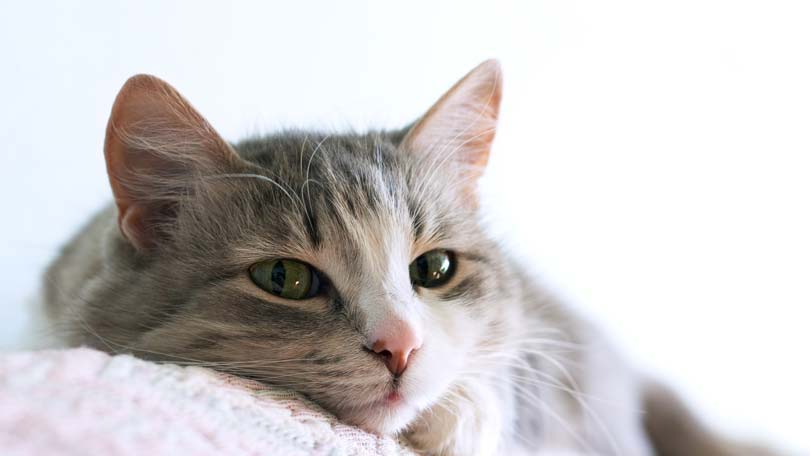
Dry cat food is the most popular form of food fed to domestic cats today. Dry cat food is both convenient, clean and easy to feed, as well as inexpensive, and available in a high-volume form. Until recently, dry food was considered the “best” food to feed cats, and was advertised extensively as well as widely recommended by veterinarians.
Recently however, studies have shown that dry cat foods might not be the best choice, and that feeding dry food may actually have a detrimental effect on the health of cats eating it exclusively, for long periods of time. In fact, diets of dry cat food have been linked to a higher incidence of chronic dehydration, urinary tract disease and renal failure.
Today’s cats are descendants of true carnivores. Having evolved on the deserts of Africa, cats adapted to their environment by having their moisture requirements met solely by the moisture found in their prey. This natural diet contained at least 65% water- commercial dry food contains no more than 10% moisture.
You may be wondering, but what about supplemental water intake? We all provide free-choice water to our cats- but how often do you see your cat actually drinking water. Obviously, he drinks some, but because drinking water is a learned behavior, not a natural one, it cannot be relied on to make up the difference between what you cat needs, and what he gets from his dry food. Over 40 million years of evolution, and until recently, the cat has not needed to rely on a supplemental water source.
As we mentioned before, the natural diet of cats would contain as much as 70% water. In order to consume that much moisture out of a commercial dry diet, the cat would have to eat seven times as much food, or chronic dehydration may result.
By contrast, commercially prepared canned food typically contains 40-45% water- still not the same amount as the cat would get in the wild, but a great improvement over dry food.
In addition to the low moisture content of dry food, once ingested the kibble will absorb moisture from within the stomach, causing further dehydration. Fed over the long term, this chronic dehydration can cause urinary tract diseases and renal failure.
While problems in the lower urinary tract of cats is not a recent problem, it has been documented as occurring more frequently, especially in cats fed a primarily dry food diet. Feline Lower Urinary Tract Disease (FLUTD) is caused by the formation of struvite or calcium oxalate crystals in the urine, which then cause blockage of the bladder. Decreased moisture content in the food decreases the volume of urine, increasing the amount of crystals present in the bladder at any given time. Treatment of cats with crystals is aimed at increasing their volume of urine, which can be accomplished with prescription diets, or often by simply changing the cats diet from dry to canned food. Cats who are switched to wet food also have a much lower incidence of recurrence of bladder obstruction problems than those who remain on a dry food diet.
In addition to urinary tract problems, long term reduced water intake and chronic dehydration can lead to chronic renal failure (kidney failure) in cats. Renal failure is a progressive and ultimately terminal condition, for which there is no cure, only supportive care. The kidneys have several primary functions in cats, including filtering waste products from the blood, regulating electrolytes, and the production and concentration of urine. As kidney failure progresses, each of these functions gradually decreases as well. Signs of kidney failure are increased water intake, increased urination, and weight loss-however, because only 30% of kidney function is needed for normal renal function, often symptoms are not present until 70% or more of kidney function is already gone.
In addition to the increased load that decreased water intake adds to the kidneys, grain proteins found in dry food release a greater amount of waste upon digestion, once again causing extra work for the kidneys in order to expel the waste material.
Aside from the above problems, dry cat food has been linked to greater incidence of obesity in cats. In the wild, a cats natural diet would consist of approximately 1-2% carbohydrates as part of the daily diet. Used in commercial dry foods as a source of calories, and to increase bulk and structure of the food, carbohydrates often make up as much as 45% of a dry food diet. Cats metabolize fat and protein almost exclusively for their energy- and as a result, most of the carbohydrates are converted by the liver into body fat. Obesity, as well as increased amounts of fat being stored in the liver (a condition called hepatic lipidosis), results.
Despite all the potential problems caused by commercial dry food diets, should you be throwing out that 20lb bag of food and buy up the canned food section at the pet store? Not necessarily, though some adjustments to your cats feeding program may go a long way to promoting their long-term health.
If your cat already has certain kidney or urinary problems, dry food may not be the best choice to feed him, and canned food might even be a valuable tool in treating their condition. In normal cats, a mix of wet and dry food may provide a sensible “middle ground” between convenience, expense, and health. In the end, if you are concerned about the use of dry cat food, or have any other nutritional questions, your veterinarian will be the best resource you can have to selecting the best long-term diet for your cat.
